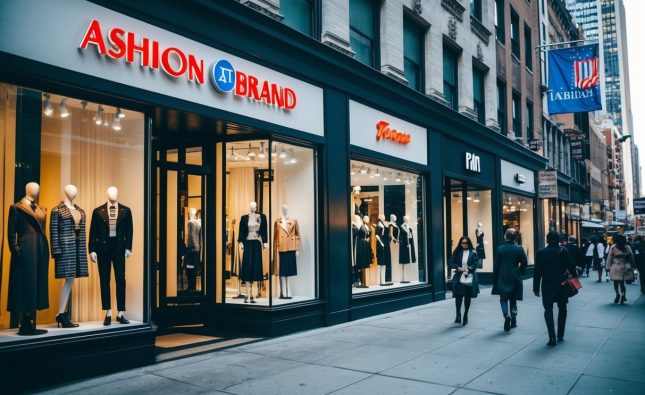
The fashion industry is undergoing a significant transformation as sustainability becomes a core focus for brands and consumers alike. Top sustainable fashion brands are committed to ethical practices, environmentally friendly materials, and responsible production processes. These brands not only offer stylish options but also promote a positive impact on the planet.

With growing awareness of the environmental impact of fast fashion, many shoppers are seeking alternatives that resonate with their values. Sustainable fashion brands provide innovative solutions that blend quality, style, and ethics, proving that one does not have to compromise on aesthetics to make a responsible choice.
As the demand for transparency and sustainability rises, the landscape of fashion is evolving. Readers will discover notable brands that are leading the charge in this movement, reflecting a shift toward a more sustainable and conscious shopping experience.
Understanding Sustainable Fashion
Sustainable fashion focuses on the environmental and social impact of clothing production and consumption. It emphasizes practices that reduce waste, pollution, and resource depletion while promoting ethical labor standards.
Defining Sustainability in Apparel
Sustainability in apparel refers to creating clothing that minimizes harm to the environment and society. Key principles include using renewable resources, reducing water consumption, and minimizing carbon emissions. Brands often implement eco-friendly materials such as organic cotton, recycled polyester, and Tencel.
Certification Standards
Many sustainable fashion brands seek certifications to validate their claims. Common certifications include:
- Global Organic Textile Standard (GOTS)
- OEKO-TEX
- Fair Trade
These certifications help consumers identify genuinely sustainable products.
Importance of Eco-Friendly Practices
Eco-friendly practices are crucial for mitigating the fashion industry’s negative effects. Traditional apparel production is notorious for water pollution, excessive waste, and carbon footprints.
Implementing sustainable practices can lead to significant benefits, such as:
- Resource conservation: Reducing the use of water and raw materials.
- Waste reduction: Promoting recycling and upcycling initiatives.
- Ethical labor: Ensuring fair wages and safe working conditions for workers.
Adopting these practices not only helps the planet but also appeals to increasingly conscious consumers. As demand for sustainable options rises, brands that prioritize eco-friendly practices may gain a competitive edge.
Leading Sustainable Brands
Several brands are at the forefront of sustainable fashion, focusing on environmental impact, ethical practices, and innovative design. The following brands are notable leaders in advancing sustainable fashion principles.
Patagonia’s Environmental Commitment
Patagonia is widely recognized for its strong commitment to environmental sustainability. The brand uses recycled materials in its products, with an emphasis on organic cotton and responsible wool.
Patagonia’s “Worn Wear” program encourages customers to repair, recycle, or trade in their used gear. This initiative extends the life cycle of products and minimizes waste.
The company also donates one percent of its sales to environmental causes, supporting various grassroots organizations. Patagonia’s transparency in supply chain practices sets a benchmark for accountability in the industry.
Stella McCartney’s Ethical Luxury
Stella McCartney is known for merging high fashion with eco-consciousness. The brand is a pioneer in using vegan materials and has eliminated leather and fur from its collections.
Stella McCartney implements innovative textiles, such as recycled polyester and sustainable viscose, to minimize environmental impact. Ethical sourcing is a core tenet of the brand, ensuring fair labor practices throughout its supply chain.
The brand actively engages in various initiatives to promote sustainability in the fashion industry, often collaborating with other organizations to drive systemic change.
Eileen Fisher’s Circular Design
Eileen Fisher emphasizes a circular economy in fashion, aiming to reduce waste by producing timeless designs that can be easily recycled or resold. The brand’s commitment to sustainable materials includes organic and renewable fibers.
Eileen Fisher’s “Renew” program allows customers to return their used clothing for recycling or resale, contributing to a more sustainable lifecycle.
The company also focuses on fair labor practices and transparency in its manufacturing processes. By prioritizing sustainability in both design and production, Eileen Fisher has positioned itself as a leader in ethical fashion.
Innovations in Sustainable Fabrics

The fashion industry is witnessing significant advancements in sustainable fabrics. Innovations in material production and recycling are transforming how brands approach sustainability. Two primary focus areas include advancements in organic materials and the use of recycled fabrics through upcycling techniques.
Advancements in Organic Materials
Organic materials are gaining traction for their environmental benefits. Fabrics such as organic cotton, hemp, and bamboo are produced without harmful pesticides or synthetic fertilizers. This cultivation process drastically reduces water consumption and soil degradation.
Key Benefits of Organic Fabrics:
- Reduced Environmental Impact: Lower chemical usage promotes biodiversity.
- Healthier Choices: Safer for consumers with sensitivities.
Brands are also exploring new organic blends. For example, Tencel, made from sustainably sourced wood pulp, is gaining popularity due to its biodegradable nature. This shift towards organic materials aligns with consumer demand for eco-friendly products.
Recycled Fabrics and Upcycling
Recycled fabrics play a crucial role in sustainable fashion. Brands are increasingly utilizing post-consumer waste, such as plastic bottles and discarded textiles, to create new garments. This practice significantly curtails landfill waste and the need for virgin materials.
Examples of Recycled Fabrics:
- RPET (Recycled PET): Made from recycled plastic bottles, it is durable and versatile.
- Recycled Cotton: Helps reduce cotton waste while providing a familiar texture.
Upcycling is another innovative approach, where existing fabrics are repurposed into new designs. This method not only conserves resources but also fosters creativity. Designers are incorporating unique patterns and styles, appealing to environmentally conscious consumers who value individuality.
Consumer’s Guide to Choosing Sustainable Fashion
Navigating sustainable fashion requires careful consideration of brand practices and personal choices. Understanding how to evaluate sustainability claims and maintain an eco-friendly wardrobe is crucial for informed decision-making.
Evaluating Brand Sustainability Claims
When assessing a brand’s sustainability, look for transparency and authenticity in their practices. Key indicators include:
-
Certifications: Look for eco-labels such as Global Organic Textile Standard (GOTS) or Fair Trade Certified. These provide assurance regarding environmental and labor practices.
-
Material Choices: Brands should clearly disclose their materials. Organic cotton, Tencel, and recycled fibers are preferable.
-
Production Practices: Investigate whether the brand uses ethical labor practices and maintains a humane supply chain. This includes fair wages and safe working conditions.
-
Longevity and Repairability: Brands should offer clothing that is designed to last. Consider if they have repair programs or provide guidance on garment care to extend lifespan.
Maintaining an Eco-Friendly Wardrobe
Building and maintaining an eco-friendly wardrobe involves intentional choices. Here are practical steps to consider:
-
Quality over Quantity: Invest in fewer, high-quality pieces that last longer instead of fast fashion items that wear out quickly.
-
Second-Hand Shopping: Explore thrift stores, online resale platforms, and clothing swaps. This extends the lifecycle of garments and reduces demand for new production.
-
Sustainable Care: Wash clothes in cold water, air dry when possible, and avoid frequent washing to minimize energy usage and wear.
-
Mindful Disposal: Donate or recycle clothing instead of discarding it. Investigate textile recycling programs in the local area.
Implementing these strategies allows consumers to make thoughtful choices while supporting sustainable fashion initiatives.












